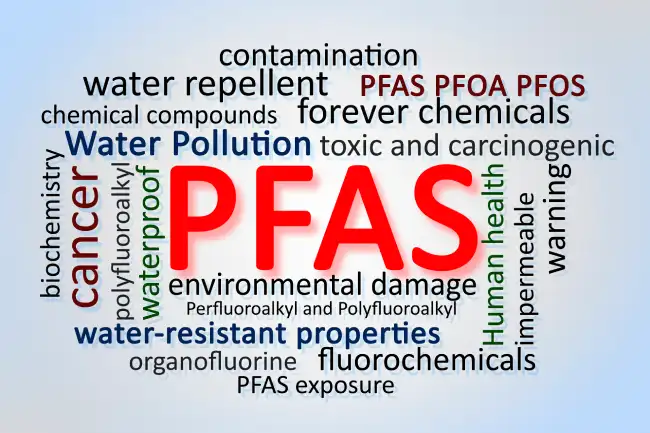Four Common Wastewater Discharge Permit Violations & How to Avoid Them
 Many people have heard the cliché, “The solution to pollution is dilution.” Unfortunately, many don’t realize operating under this principle is more likely to get you and your company into trouble than out of it. This article includes four common industrial wastewater violations that demonstrate just this. Keep reading for best practices to avoid them.
Many people have heard the cliché, “The solution to pollution is dilution.” Unfortunately, many don’t realize operating under this principle is more likely to get you and your company into trouble than out of it. This article includes four common industrial wastewater violations that demonstrate just this. Keep reading for best practices to avoid them.
Missed Reporting Deadlines
These violations are the easiest to avoid. Review your wastewater permit within a day or two of receiving it from the permitting authority. Take notes on the regulations and reporting deadlines. Knowing the permit requirements inside and out will make you a better manager of the tasks involved with maintaining compliance.
Build a calendar with all of the reporting deadlines and work backwards from each one to schedule tasks required before you can compile the report. If your compliance sampling results are due to be reported by December 31, schedule the sampling in November at the latest. If you contract your wastewater sampling operations to a company such as Triumvirate, ensure you coordinate with them well in advance of your planned sampling dates.
If a deadline is approaching or you identify that your timeline will not allow you to meet the deadline, contact the permitting authority (usually you’ll speak with the Industrial Pretreatment Coordinator) right away to ask for an extension. Sometimes simply asking for an extension is enough, but be prepared with legitimate rationale for why you will be unable to meet the deadline. Permitting authorities are more likely to give extensions related to special or one-time permit requirements, or setbacks due to other interfering projects at your facility. Don’t expect to get a wastewater permit extension for recurring requirements such as submitting quarterly or semi-annual flow log records.
pH Range
This common violation is admittedly more technical than mostly administrative task of ensuring on-time deliverables, but even if you aren’t a industrial wastewater operator, you can keep this type of violation from visiting you.
A properly-designed wastewater treatment system is more likely to discharge compliant effluent consistently. If you pick an “off the shelf” treatment system because it meets the minimum specifications and you may end up running outside the designed limits. Bigger isn’t always better, because excess capacity can cause other problems. Work with your engineer and/or system designer to incorporate capacity for future expansion or down-sizing. If the system is a hand-me-down, get copies of the original design documentation and challenge whether or not it will fit your specific needs. Your time and effort up front can easily pay for itself by avoiding just one non-compliance violations
Typical regulations require inspections at least weekly, but sometimes the equipment requires more frequent maintenance. Work with your operator, consultant, and engineer to make this determination. Remote inspections and operational observations can be effective as well. Some people are reluctant to make a small investment in technology that can help with compliance. There are many remote alarm and monitoring devices available today. These exist in a range from simple singular alarms connected to a building wastewater management system to full SCADA that allows control of all equipment as if you were standing at the equipment control panel itself. The investment of this relatively inexpensive technology pales in comparison to the distraction and potential lost productivity that comes along with fire-fighting a noncompliance violation.
Metals
Review your process chemical usage and identify any compounds that contain metals of concern such as Cadmium, Chromium, Copper, Lead, Mercury, Nickel, Selenium, Silver, and Zinc. Vet out all potential sources and collect metal-containing waste at the process location whenever possible. Don’t risk contaminating a larger volume of water with a small amount of a sensitive contaminant. Once the contaminant is there, it is often difficult and costly to remove.
Mercury is a good example of a metal that many dischargers have trouble with. Mercury in wastewater is enforced at concentrations below one part per billion. Some facilities have been fighting to remove mercury from their industrial wastewater streams for decades. Finding the source of a metal contaminant can be nerve-wracking, but segregating it from the discharged waste so that there is no chance of contaminating the facility drain pipes can save a lot of future hassle.
Volatile Organic Compounds (VOCs)
The approach for VOCs is similar to that of metals except that VOCs are susceptible to laboratory analytical interference. Detection of volatile organic compounds can seem to materialize out of nowhere. Non-regulated compounds that do not affect your permit compliance may show up in high enough concentrations in your sample to mask or interfere with achieving accurate results.
The laboratory analytical equipment produces VOCs test results as spikes on a chart. The laboratory may dilute the sample in an attempt to normalize the spikes. This will allow the results for all compounds to be read individually. The trouble with diluting samples is that the detection limit (the lowest concentration that can be reported) is raised. A diluted sample detection limit may end up being greater than the permitted wastewater discharge limit. When this happens, compliance with the detection limit cannot be proven and the regulatory agency will consider the sample to be over the wastewater discharge limit even if the compound is not detected.
You can avoid the trouble that comes with pretreatment, interference and sample dilution by anticipating potential interferences ahead of time and working with the laboratory on methods for eliminating interference while still achieving a valid analytical result. Click below to learn more about the industrial wastewater services we have to offer.






